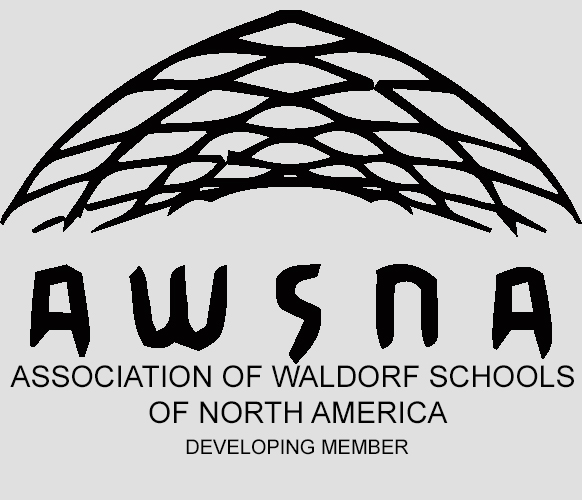From Class Teacher Libby Case: For most of the school year, grades 6 and 7 have combined for their studies: chemistry, perspective drawing, creative writing, physiology, and our play, "The Little Mermaid." In the fall, the two groups separated for one block: the sixth graders studied the Rise and Fall of Rome, while the seventh graders studied The Age of Discovery.
This spring we are once again in our respective groups. The sixth graders are busy learning about the Middle Ages and preparing for the Medieval games that will take place on our campus on May 5. This is a wonderful event organized by Movement Teacher Jacqueline Gabe in conjunction with the Lake Champlain Waldorf School. Students will spend the day together participating in traditional knightly challenges: archery, axe and knife throwing, group challenges, and a quest. In preparation for this event, students have been busy during morning recess acting as squires to assigned teachers. This experience of service to another is designed to help them learn and understand the seven knightly virtues: courage, justice, mercy, generosity, faith, nobility, and hope. The culminating experience of this service will be the Knighting Ceremony, which will take place at the end of the Medieval games. All are welcome to attend this regal event, Friday, May 5, 9am to 2pm, with the Knighting Ceremony beginning at 2:15pm on the field.
The seventh graders, in turn, have been busy studying the Renaissance period. They began their studies with a look at the Italian Renaissance and the painting masters that arose from this period. Students not only studied the biographies of some of the great Renaissance artists, including Michelangelo, Leonardo da Vinci, and Raphael, but also some of their techniques with artist Laurie Demrow. As a culminating project, Ms. Demrow asked the students to select a portrait painted by one of the great masters of the period and had them reproduce this portrait using their own face as the model for the work. These works will be up in school, so come have look at the remarkable paintings they were able to create!
The full grade 6/7 class recently took part in a series of Community Service projects in our area. On Tuesday, April 11, the class split into three groups for the day to help out where they were needed.
- One group headed to Chelsea, VT, where they first visited with elders at the nursing home in town. Students played games and chatted with the residents for about an hour, and then headed across the street to the Chelsea Food Shelf where they spent the rest of the day unloading food, organizing boxes for pick up, and helping visitors to carry food out to their cars.
- A second group headed to the home of community members Wolfgang and Louise who needed some extra hands packing and cleaning as they prepare to leave their home of seven years and head out on a two-month trip to visit friends and family around the US. Students vacuumed, sorted, and packed boxes, much to the joy and appreciation of the elderly couple who could not have done it without them!
- Our third group spent the day at the Good Samaritan Homeless Shelter in Barre, VT. There they baked for the residents of the shelter, cleaned the attic of accumulated clothing donations, and helped with yard work for spring cleanup.
Needless to say, the students gained an incredible amount from these projects. When asked the next day, “What was it you gained from this experience?” Students replied, “It felt really great to help someone else and know that it meant a lot to the people we helped.”











